Travelogue #11: Fes Medina, a Labyrinth of Alleys, Shops and Heritage
Spain, Portugal and Morocco Trip (February 23 to March 19, 2023)
As our vehicle was approaching Fes, the green farmland outside the window gradually changed into orange slopes. It was dusk time, and the African twilight added a mystery to this ancient city, which has a history of over 1400 years. I was excited and also curious about what I was about to explore in the next two days.
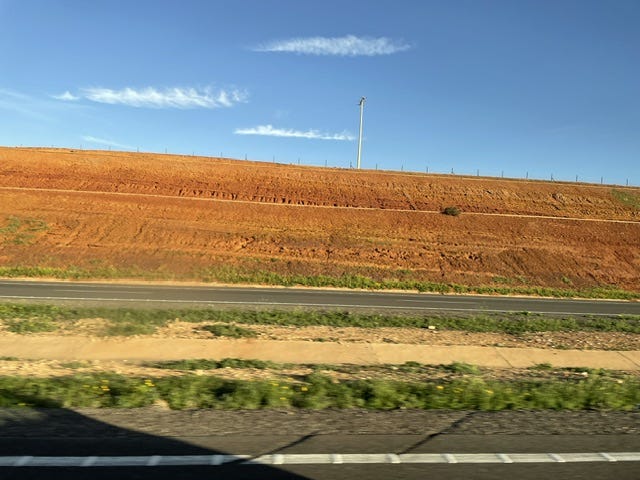
One of my travelogue pieces is about Chefchaouren, a blue city. But I didn’t know that four imperial cities in Morocco also have their own colors: red Marrakech, white Rabat, Black Meknes, and yellow Fes. Why is Fes yellow then? Though not so typical as Chefchaouren where the blue color dominates everything, the buildings in Fes are mostly a creamy yellow color, plus the yellow slopes and sand-covered mountains in the distance (turning into orange in twilight).
The Fes Medina is the world’s largest medieval medina and a UNESCO site. Yaya arranged a local guide to lead us in and out of the medina, a labyrinth of over 9000 winding streets and alleys lying within 365 hectares. The buildings in the medina date back to the 9th century; there are 350 mosques in the area that are still in use today. GPS doesn’t work in the area, most tourists are unable to navigate in the medina on their own, so a local guide is necessary in order to get in and out.
I was overwhelmed by the number of shops and stalls selling various merchandise ranging from leather goods, Morocco traditional clothing, shoes, wool yarns, jewelry, spices, carpets, and more and more. However, shopping is difficult because you have to enjoy and be good at bargaining. All alleys are narrow, we had to proceed cautiously in a single file to avoid bumping into excited yet bewildered shoppers, coming in front of a sad-looking donkey, or knocking down something on a stall, plus constant shouts of “ Look Out” by our guide. It was a unique experience to remember!
Another unforgettable experience is the visit to a leather tannery. It is a leather-making factory, and the working conditions are just appalling. Workers work under the scorching sun inhaling the stinkest smell and using bare feet and hands to treat rawhides. The rawhides are first immersed in cow urine, water, and salt, later thrown into pits filled with pigeon poo, and last into the vats filled with colorful dyes. That is the way how colorful leather is created and shiny leather goods are made. It is hard to describe in words how bad the smell is. We were given mint leaves to lessen the smell, but it was so powerful that I became dizzy and was on the verge of throwing up! I think it is one of the worst jobs in the world! After visiting the tannery worksite, we were led into leather shops, the leather jackets, shoes, bags, and purses looked so colorful and enticing, but to me, they represented sweat and toil. I bought myself a pair of leather slippers. When I thought of the men toiling in the backyard of the shop, I lost my interest in bargaining.
As chaotic and noisy as the medina is, there is a quiet and holy place, that is Al Qarawiyin University, which was founded in 857. It was a leading spiritual and educational center in the Islamic Golden Age. Over the years, all faculties moved outside the old campus except the teaching of Islamic religion and legal science. There is no traditional classroom setting, instruction is delivered with students sitting in a semi-circle around a sheik. Students come from Morocco and Islamic West Africa, though some come from Muslim Central Asia. The Fes campus is a mosque with impressive Islamic architecture and a prayer hall.
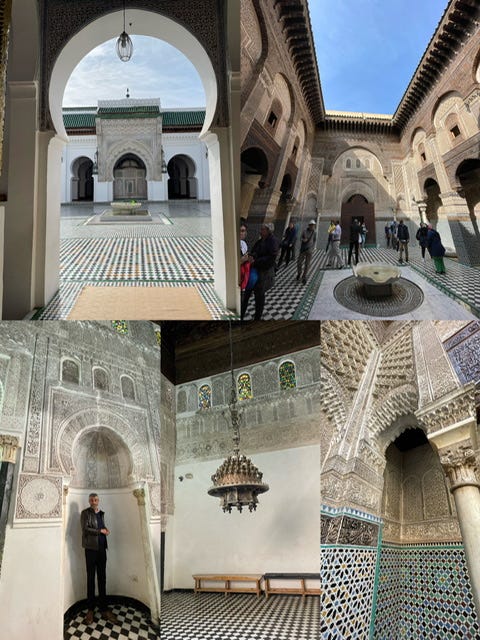
Yaya always had dinner recommendations for us. He knew that after a long day and a quick lunch, we would like to have a nice dinner to relax and digest what we saw during the day. This time, Vincent and I jumped at his recommendation of dining with a local family.
Our driver dropped us at a spot near a fountain at one of the entries to the medina. Two girls in their late teens or early twenties approached us. They were beautiful, with curly shoulder-length black hair, big eyes, and a sweet smile. They were to take us to the family. We followed them through zig-zag narrow alleys for about 20 minutes, then stopped at an inconspicuous and worn-out gate. The girls pushed the door open and let us in. Wow! We stepped into a medieval garden-like courtyard and were greeted by husband and wife, apparently the owners of the house and the girls’ parents.
We were seated at two round tables and served mint tea and desserts. The wife began chatting with us, but the husband disappeared into the kitchen. She was a Parisian and came to Morocco by marriage. This ancestral mansion with twelve high columns, left by her husband’s side of the family, is a UNESCO World Heritage site. Her late father-in-law was a professor and sat on the Council of Professors and Scholars. There was a photo on the wall showing him with the King of Morocco at the time. I learned something new about Islamic law during our conversation: interpretation of the Koran is made by a council of professors and scholars, and judges and government officials have to follow their interpretation.
The hostess, her husband, and their daughters spoke perfect English. To my surprise, the husband was the cook and waiter that night. I gathered from the manners of this family and the way they dressed that this prominent family followed a mixture of Islamic and Western religions and cultures. Yaya told us that in cities like Fes and Marrakech, rich families like to conceal their elegant homes behind a simple appearance. We were also advised that we shouldn’t take pictures of people in Morocca unless we ask for permission. I wanted to take a picture with the family and was afraid of being judged impolite. The dinner was meticulously prepared and it was a typical Moroccon meal. We enjoyed it very much, and the experience was even impressive. It’s a pity that I don’t have a picture of this family.
At our farewell group dinner, Yaya asked us what was the highlight of our days in Morocco. Everybody had his or her highlight of the trip, for me, it was the private dinner at this Morocco family!



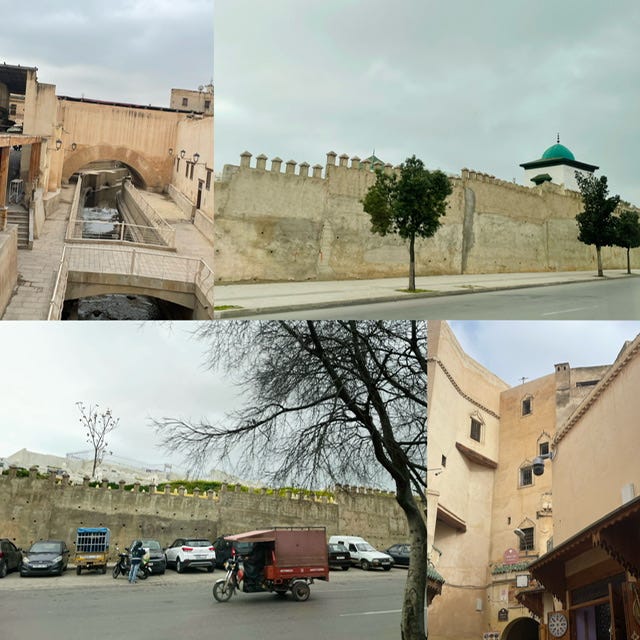
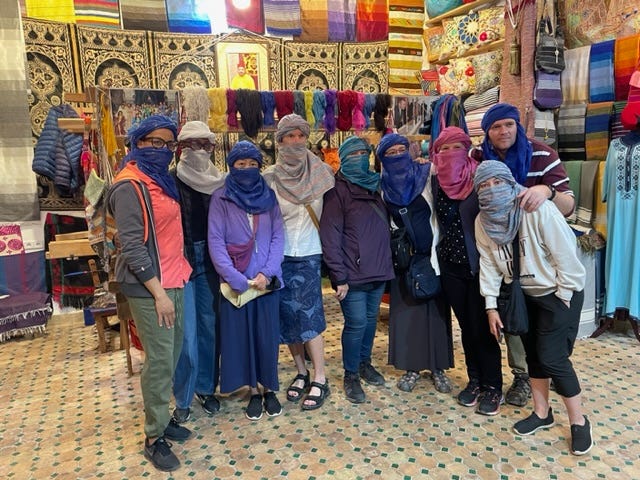
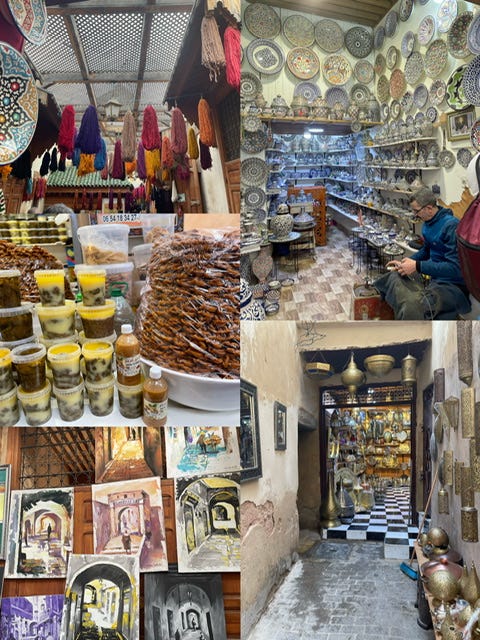
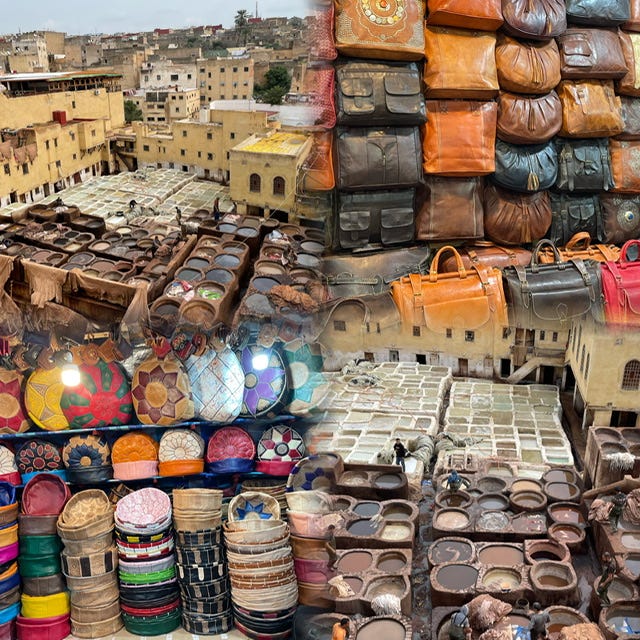
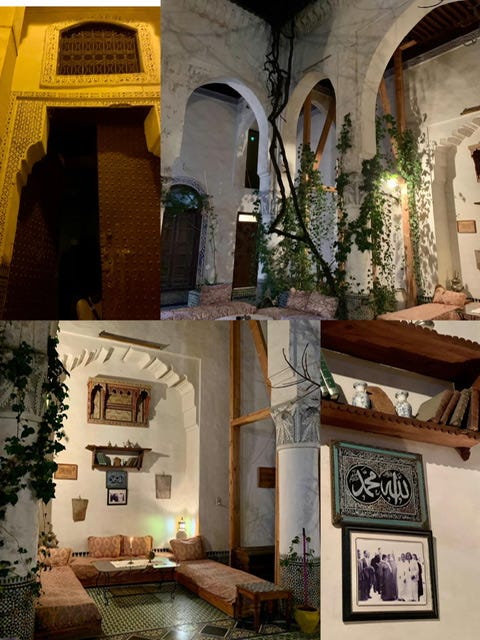
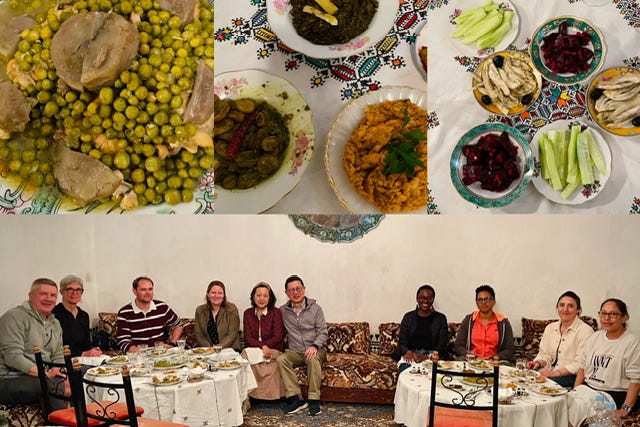
Who can even imagine that this wonderful piece is written by a young lady grown up in China 👍